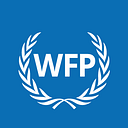Innovative shock measurement generates insights on resilience
By Emma Frankham (Technical Writer, DIME, World Bank), Marcus Holmlund (Senior Economist and Research Program Manager, DIME) and Hanna Paulose (Impact Evaluation Officer, WFP) with inputs from colleagues from the Climate & Resilience Window
Countries in the Sahel — Mauritania, Mali, Burkina Faso, Niger, and Chad — are among the poorest in the world and face frequent shocks that can hinder the ability of communities and families to prosper. The Sahel is home to 80 million people (projected to double over the next 20 years), of whom 25 percent live in conflict-affected areas. This is a region where 25–30 percent of children or youth do not attend school, 80 percent of the land has poor soil quality, and malnutrition is persistently high.

Climate change is hitting the region hard. Over the past 50 years, the average temperature in the Sahel has increased by 1 degree Celsius (twice the global average change) — affecting rainfall patterns and accelerating the deterioration of soil quality in the land that millions of families depend on for their livelihoods. Every three years, the Sahel experiences drought; and every five to ten years, major drought.
The region is also afflicted by growing political instability. Conflict and an expansion of armed groups in Mali, Burkina Faso, Niger, and the Lake Chad Basin drive population displacement, destroy livelihoods, and interrupt essential services such as schools and health and sanitation services.

However, despite the prevalence of shocks in the Sahel, there are also potential opportunities for prosperity.
In 2018, WFP and the German Federal Ministry of Economic Cooperation and Development (BMZ) joined forces to launch the Integrated Resilience Programme in Mauritania, Mali, Burkina Faso, Niger, and Chad. Over five years, one billion USD will be used to benefit two million people across 800 communities in these five countries. The programme is being implemented on the ground in close partnership with UNICEF, the World Bank, and other partners.

The programme provides a package of support for communities, including school meals, community-level nutrition programmes, support to smallholder production (via WFP’s flagship Smallholder Agricultural Market Support (SAMS) programme), and Food Assistance for Assets (FFA).
FFA provides food assistance through cash, vouchers, or food transfers while families build or rehabilitate assets. For example, restoring degraded land by creating half-moons (pits dug into the soil that trap water and allow crops to grow), improving water harvesting, or building grain stores and roads.

This integrated approach aims to help communities withstand shocks — including climate change and political instability — by improving their income and food security in a durable manner.
It is critical that sound evidence guides the implementation of the programme and WFP’s wider approach to resilience building looking forward. WFP’s Office of Evaluation has therefore partnered with the World Bank’s Development Impact Evaluation (DIME) department to carry out impact evaluations in Mali and Niger, using randomized control trials (RCT). The evaluations seek to answer the question: How does participating in an integrated package of support improve the capacities of families and communities to build resilience — absorb shocks, adapt to changing environments, and improve food security and well-being — over time?
From a list of communities eligible to participate in the programme, two randomly selected groups were created: those participating in the programme immediately, and those who will participate in the programme later.
Families will complete surveys before the start of programme participation, frequently during programme participation (every other month) and after the programme has ended. Frequently surveying families allows WFP and DIME to capture both the immediate and the longer-term effects of shocks and assess how programming supports these families as they recover.
This approach will generate much-needed evidence that can be used to build more effective WFP programmes and ensure that dollars spent are positively impacting the families and communities served. This is critical given increasing needs worldwide, limited resources, and a thin evidence base on what works and why.
Read more about WFP’s work on climate and resilience here.
If you would like to receive updates on new blogs, events or impact evaluation publications, please fill in this form to receive regular updates or contact oev.impactevaluation@wfp.org for more information.
